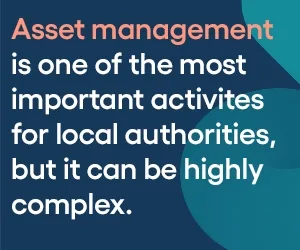Highways England has promised to open 52 schemes across Road Invest Plan2 (RIS2) as well as delivering ‘wider activities’ beyond the traditional focus of road investment.
This comes as the organisation launched its Delivery Plan 2020-2025, which sets out in detail how Highways England will deliver its strategic outcomes and measure success.
The Delivery plan gives details of specific funding, activities and projects Highways England will deliver over the five years from 2020 to 2025. It also explains how Highways England approaches efficiency and risk management.
It includes Highways England’s performance framework, which brings together its delivery aims for the second road period (2020-2025).
In terms of maintenance specifically, He said that it anticipates that the second road period will be ‘more challenging than the first. “Demand for our network is increasing, and many of our assets are nearing the end of their life and may need more frequent maintenance before renewal. Despite this, we intend to keep a flat maintenance funding level, without compromising safety or network availability, as we match increases in costs with efficiencies in how we work. We have also allocated a significant share of our maintenance funding to the emergency repairs needed to deal with unexpected incidents, such as fuel spillages,” said the Delivery Plan.
Over the second road period, HE said will make improvements in the following areas:
*Delivering data-driven maintenance
*Improving environmental performance
*Managing our soft estate
“Proactive maintenance is central to our journey to becoming an excellent asset manager. During the second road period, we will take greater control of our maintenance programme, including drainage cleaning, grass cutting and litter collection, and improve our asset monitoring. We already collect our own data to develop insights and we are carrying out more asset inspections, allowing us to refresh our data at a greater rate. During the second road period, we will make better use of this data to understand, and predict, our maintenance requirements. This will allow us to intervene early, before degradation becomes a problem. It will also allow us to schedule maintenance in a cost-effective way, combining tasks into work packages,” it added.
“We have already started investigating how we can bring together asset renewal activities with general maintenance work. This will help us complete even more activities every time we work on our network, lowering cost and reducing the frequency of lane closures,” it goes on to say.
Highways England said a focus will be brought to reducing the severity of accidents through a package of activities that will be developed around the theme of ‘safer roads, safer people, safer vehicles and a coordinated response to collisions. “We will review and refresh our Home safe and well approach by the end of 2022-23, ensuring it remains fit for purpose. We will also focus our safety communications on building customer knowledge and awareness, changing attitudes and influencing behaviour,” it said. As part of the Delivery Plan, £10.8 billion of funding will be made available for ‘operating, maintaining and renewing its network, which remains the ‘bedrock of our activity,’ against the forecast increase in demand on its network.
“Our primary focus will be to keep our roads safely and smoothly, and our customers informed and prepared. We will keep our assets, everything from bridges to roadside signs, well maintained. We will increase investment in renewals activity, particularly across concrete roads, structures and safety barriers,” said HE. It also makes a commitment to the roll out of its Asset Delivery.
Over £14 billion will be committed to major enhancement schemes. “As well as completing the enhancements started in the first road period, we will start work on 12 new major schemes. These range from the Lower Thames Crossing in the south-east to the A66 Northern Trans-Pennine in the north-west,” it said in the plan. “ We have selected and developed these major schemes to increase safety, improve reliability and deliver value for money. We consider our customers and the environment in the design of each and every scheme,” it added.
As part of its enhancements programme, HE will also make ‘significant progress’ in delivering a smart motorway core network.
In March 2020, government published its Smart motorway evidence stocktake and action plan. HE will take forward the actions set out by the Secretary of State for Transport. As part of this work, HE said it would also improve the information it gives to its customers to help increase safety.
On top of this, HE said it will allocate £936 million for designated funds, of which £66 million is to help it achieve no net loss of biodiversity. These funds will support projects which have wider benefits for customers, neighbouring communities, the environment and the economy, said HE. “We want our network to be accessible to everyone, including the walkers, cyclists and horse riders who need to cross it safely. Working with stakeholders and partners, we will design and deliver these projects collaboratively. We will work with universities, technology centres and research institutes to better understand opportunities for improvement,” said the document.
Over the second road period, HE will also work towards achieving our target of £2.23 billion of efficiencies by the end of the second road period.
As part of the foreword in the document, HE’s Chief Executive, Jim O’Sullivan, said: “Over the past five years, we have delivered the objectives of government’s first Road Investment Strategy (RIS1). We have opened 36 schemes for traffic, and started work on a further 31 schemes. These have added 370 lane miles of capacity to our network, helping customers travel more safely and easing congestion. We have also achieved efficiencies of £1.4 billion.
“Our ambitions for our network over the next five years are set out in our Strategic business plan. This document, our Delivery plan, contains the detail of how we will invest in the safety and smooth running of our roads over the next five years. It lays out the outputs and deliverables that the Office of Road and Rail (ORR) will monitor us on over this period.
“Everything we do will be in the best interests of the economy, our customers, our communities, and the environment we live in. Over the next five years, we will work hard to meet the new targets we have been set, maximising the value of every pound that we spend. We will deliver the best possible outcome for the taxpayer, and enable safer, smoother and more reliable journeys.”
To read the full Deliver Plan, please click here: https://assets.publishing.service.gov.uk/government/uploads/system/uploads/attachment_data/file/910866/5-year_Delivery_Plan_2020-2025_FINAL.pdf



























